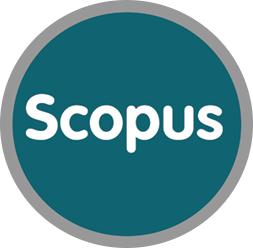Формування антибактеріальних покриттів на хітозанових матрицях методом магнетронного напилення
DOI: https://doi.org/10.15407/hftp08.04.410
Анотація
Методом магнетронного розпилення отримано тонкі мідні покриття на біодеградуючих хітозанових матрицях. Вивчено фізико-хімічні характеристики отриманих покриттів, а також їхні антибактеріальні властивості. Вміст міді не перевищує порогу токсичності для людини 200–250 мг/доба. Наявність ультратонкої мідної плівки не змінює морфологію і кристалічну структуру плівок хітозану, але значно підвищує їхні антибактеріальні властивості; зокрема, плівки пригнічують ріст S. aureus.
Ключові слова
Посилання
1. Muzzarelli R.A.A. Chitin in Nature and Technology. (New York: Plenum Press., 1986). https://doi.org/10.1007/978-1-4613-2167-5
2. Grass G., Rensing C., Solioz M. Metallic copper as an antimicrobial surface. Appl. Environ. Microbiol. 2011. 77(5): 1541. https://doi.org/10.1128/AEM.02766-10
3. Badaraeva A.D., Nemoykina A.L., Bolbasova E.N., Tverdokhlebova S.I. PLLA scaffold modification using magnetron sputtering of the copper target to provide antibacterial properties. Resource-Efficient Technologies. 2017. 3(2): 204. https://doi.org/10.1016/j.reffit.2017.05.004
4. Ellmer K. Magnetron sputtering of transparent conductive zinc oxide: relation between the sputtering parameters and the electronic properties. J. Phys. D: Appl. Phys. 2000. 33(4): R17-R32. https://doi.org/10.1088/0022-3727/33/4/201
DOI: https://doi.org/10.15407/hftp08.04.410
Copyright (©) 2017 O. V. Kalinkevich, O. Yu. Karpenko, Ya. V. Trofimenko, A. M. Sklyar, V. Yu. Illiashenko, A. N. Kalinkevich, V. A. Baturin, S. N. Danilchenko


This work is licensed under a Creative Commons Attribution 4.0 International License.



